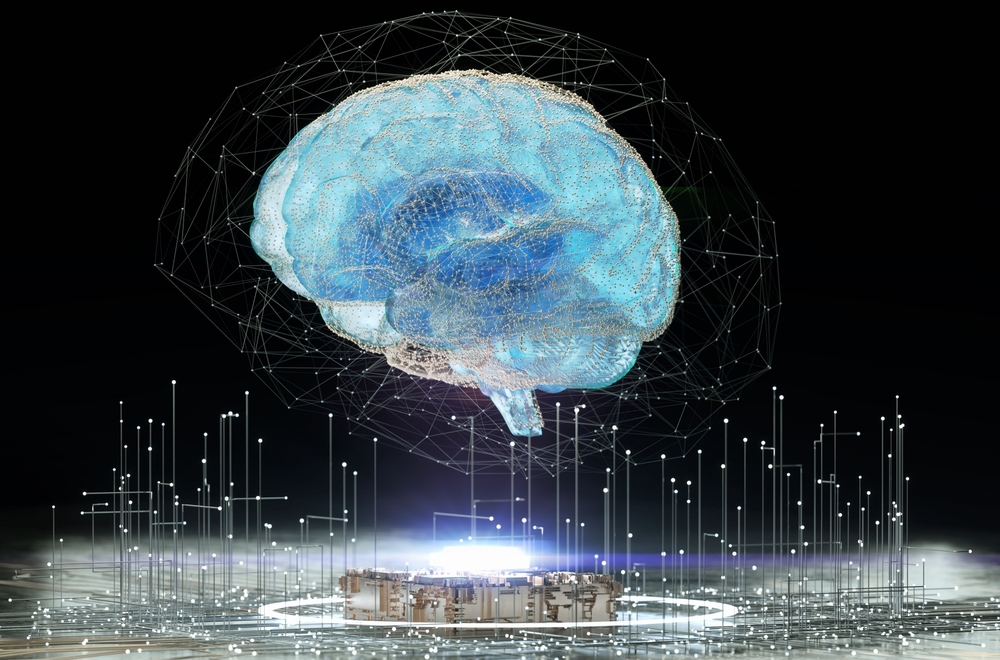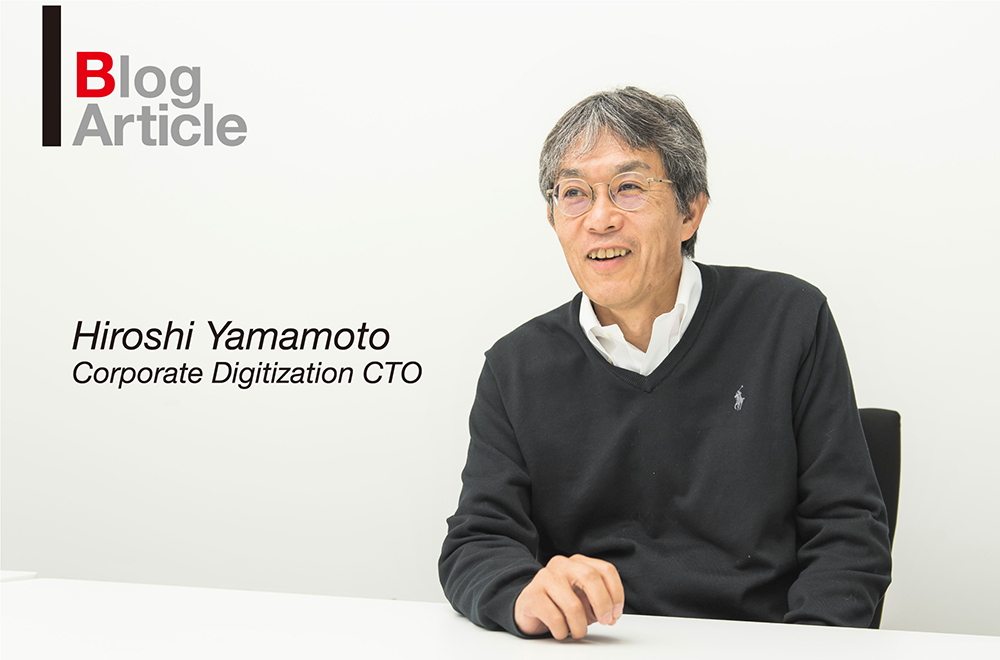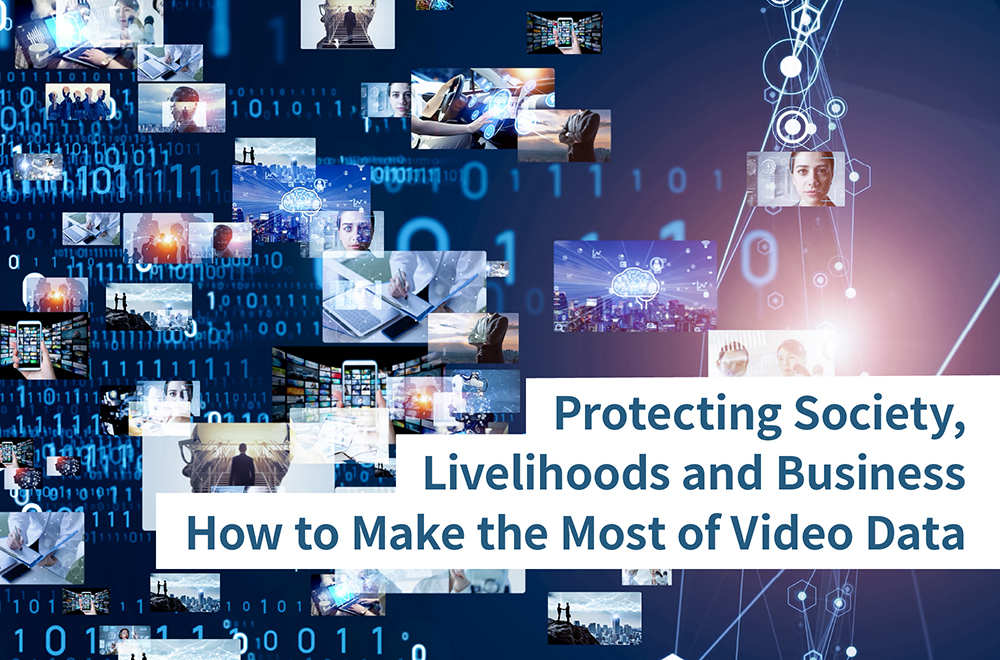Toshiba’s CTO Shares His Vision: The Cyber and the Physical–Part 1
2019/01/09 Toshiba Clip Team
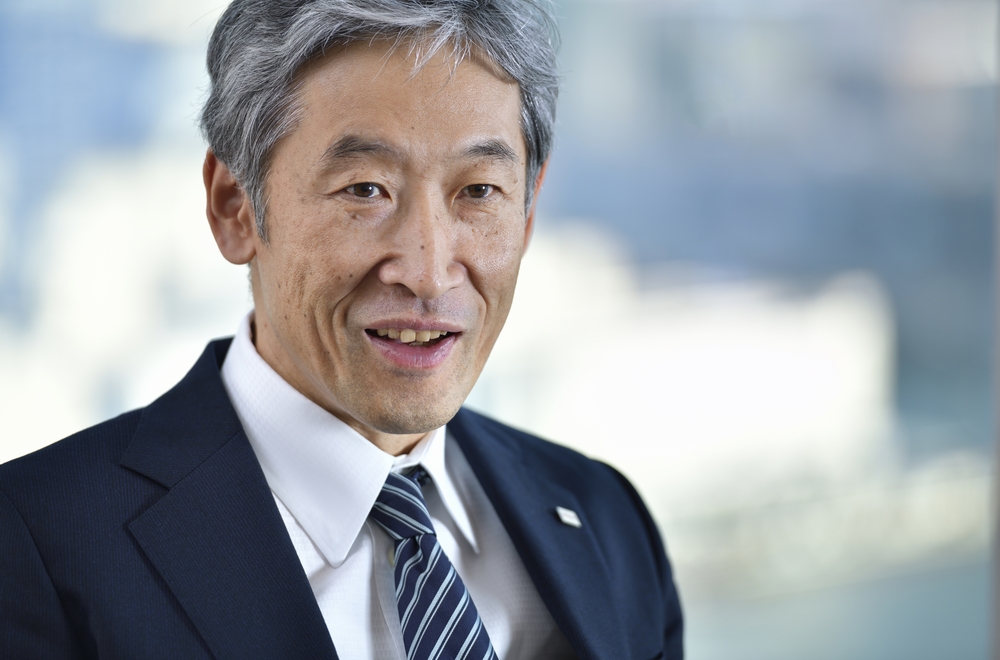
Internet search, SNS communications, cloud-based storage of photos and movies, e-commerce and other on-line services, most of them developed by Google, Apple, Facebook and Amazon (the GAFA companies), have become indispensable to daily life. However, our lives do not move forward simply through cyberspace activities that exist solely on servers and networks, because real life is analog. Only when connected to things that exist in the real world, does data become truly meaningful.
Toshiba’s aim is to be a company that solves social problems with technologies that fuse the cyber and the physical, the real world. What technology strengths does Toshiba have, and what kind of world does it aim to realize? To find out, we talked to Toshiba’s CTO, Dr. Shiro Saito.
– In its business plans for the next five years, Toshiba has stated that it “aims to become one of the world’s leading cyber-physical systems technology companies.” Does that mean that technologies combining the cyber and the physical will be in demand in the future?
Saito: Since the 1990s, an IT revolution centered on the Internet and semiconductor technologies has dominated the development of the world, and value has been created by developing business models based on how to use internet technologies. Recently, interest has focused on the “GAFA” companies—previously it was “GAFMA” and included Microsoft, but now the term covers the four companies responsible for the digital revolution in gathering personal data and using it to provide value. However, truly innovative technologies like those that triggered the industrial revolution have not appeared, and we live in a time when using technology to create intrinsic value has become difficult.
Having said that, we now see that fields like AI and deep learning are experiencing a remarkable technological evolution, and we believe that, in coming years, the key will be working out how to integrate these cyber technologies with real-world technologies, such as biotech, robotics, and sensing.
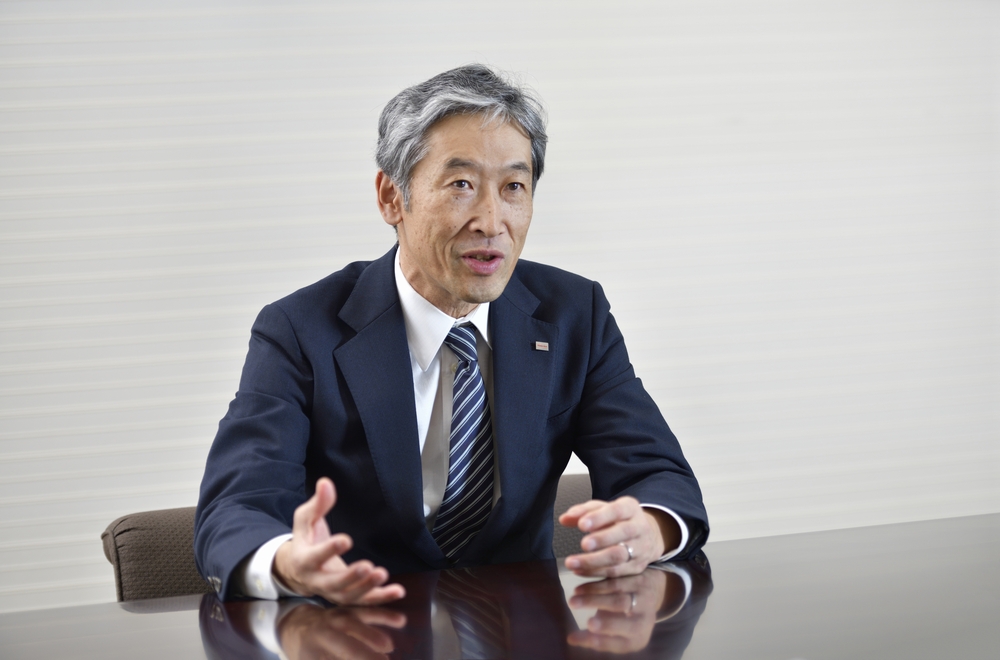
Dr. Shiro Saito, Toshiba’s Chief Technology Officer
– Just how will cyberspace technology relate to physical, real-world technology?
Saito: First of all, although we use the word cyber, please think of an image of the human brain. Physical can be understood as products, such as the parts and materials, systems and services we see in the real world. We are increasingly able to use sensing and network technologies to gather information from product operations and from systems and services. We can then use AI and other technologies to analyze and understand that data in cyber space, and output it as feedback into the real world—as optimal solutions, forecasts, and plans that add value to real world technologies, products and services. We believe that repetition of this cycle will lead to the creation of even newer technologies, products and services.
This cycle is the “cyber-physical system” (CPS), and it is the shape of the company we are aiming for. The term is not particularly new. In fact it was the research direction that we adopted back in 2012 when I was the Director of the corporate R&D Center. One way of looking at it is to say we are now at the point where we can take what we were aiming for in our research work at that time, and bringing it into our business.
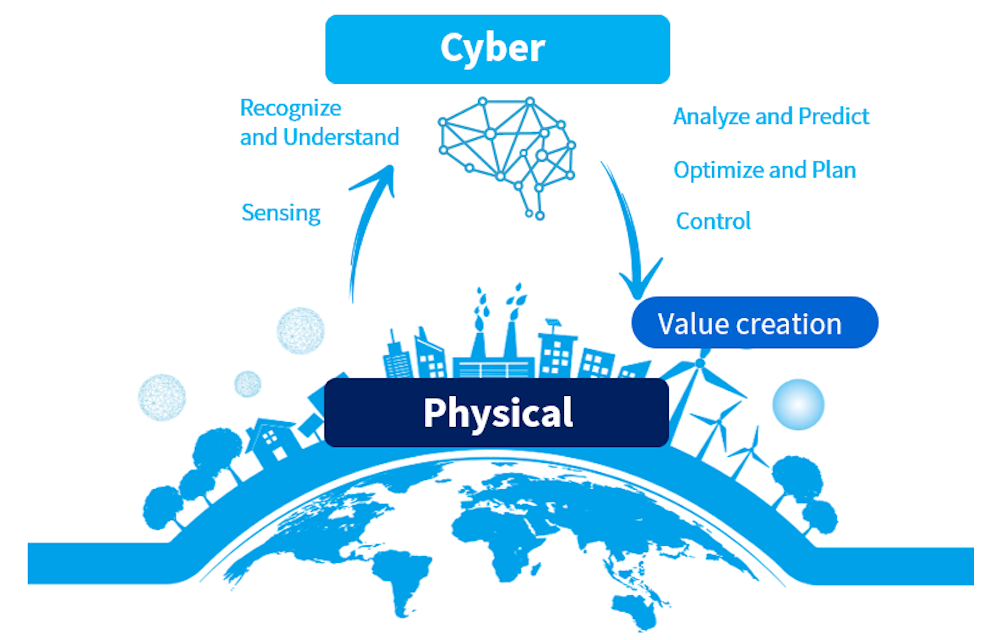
– In a world where cyber and physical technologies merge, what do you think will make Toshiba a winner?
Saito: As I just noted, we believe that successfully repeating the cyber and physical technology cycle will lead to value creation. To break that down, it is possible to deliver equipment and systems that produce data that can be handled and analyzed in cyberspace, and to make effective use of data collected by companies that handle maintenance and operations. This makes it possible to repeatedly go through the technology cycle and harvest really useful data.
Saito: If we look at Toshiba, we have cultivated technology and know-how over many years to deliver products and services in key areas: energy, including power plants, and social infrastructure, where our expertise ranges from building systems to railroads. This track record and the degree of trust we have built up over many years in business are not something that can be earned overnight. Our broad knowledge base of the physical domain provide us with a rich source of “domain assets”. But in parallel with this, again for many years, we have also accumulated know-how in AI technologies. These are real sources of strength for a company that manufactures on the basis of technology, and by fusing them, I am sure we have all the potential needed to become a global leader in a world where cyber and physical technologies are starting to merge.
– What kind of products and services are actually being realized though this merger of cyber and physical technologies?
Saito: At Toshiba we can point at many things we are working on at the technology level. One is the virtual power plant (VPP). Here we are using IoT to coordinate distributed power sources, such as solar, wind power and hydrogen power generation sites, electric cars and rechargeable batteries, and to coordinate their operation as if they were a single power plant. By utilizing IoT in areas such as power saving and nega-watt transactions, and conducting AI-based analysis and power demand prediction, we are also working with customers to construct mechanisms for controlling distributed power sources and equipment on the customer side and optimizing power supply.
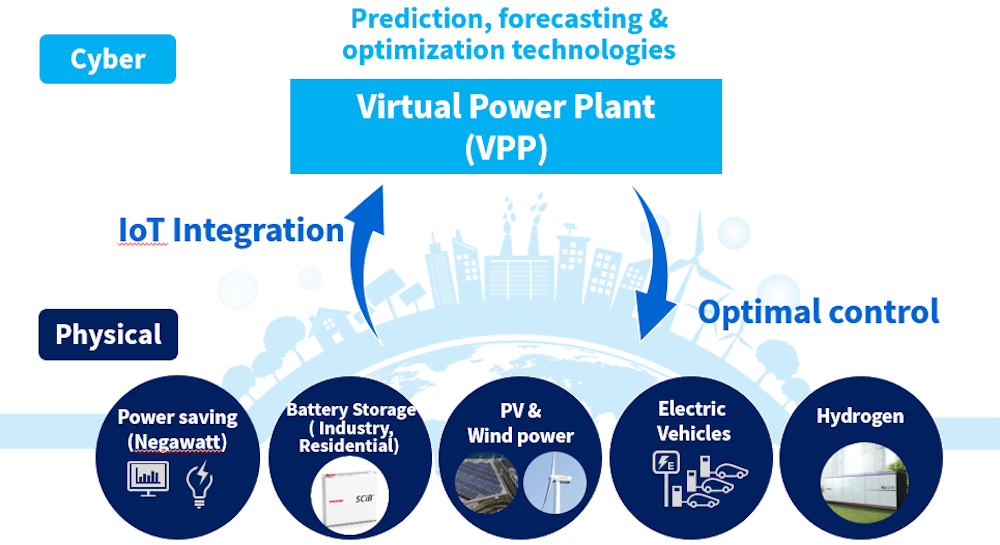
For another example, we can look at railways, where we have hybrid locomotives equipped with high efficiency motors that use batteries and permanent magnets. A key feature of these locomotives is their excellent environmental performance, but in future I think we can also contribute to the optimization of maintenance proposals and operating plans by collecting and analyzing operational data through connection to networks.
Robotics is yet another area where we are promoting technology integration. To be more specific, we are using our sensing and control technologies to develop robots that can automate logistics, and devising technologies to collect and analyze operating status data and efficiently operate multiple robots.
– In the product groups that Toshiba handles, which specific areas of technology do you intend to strengthen?
Saito: Toshiba’s business ranges wide, covering parts and systems in fields as diverse as energy, social infrastructure, semiconductors and storage, but one area that we will focus on is the SCiB™ rechargeable battery. By using metal oxides such as lithium titanate as the negative electrode material, we have realized batteries that deliver rapid charge and discharge times, a high level of safety, and a long life. We have been mass-producing and shipping the SCiB™ since 2011, but we have yet to record a single accident. The lifespan is also very impressive: power capacity is maintained at 70% or more even after 20,000 charge-discharge cycles*2, which explains why it is highly suited for automotive and industrial applications.
Our current research work on the battery is focused on achieving a higher capacity and higher output. We are investigating a new material, niobium titanium oxide, and aim to use it to push battery capacity to 1.5 times that of the current SCiB™. Inside batteries you will find something called a separator, and we have improved both output and capacity by changing its structure. Looking to the future, we expect the greater use of electric vehicles to increase rates of car sharing and believe that this will require batteries offering rapid charge and discharge.
*2Test conditions: Environmental temperature 25°C; charge/discharge current 3C(60A)/3C(60A)
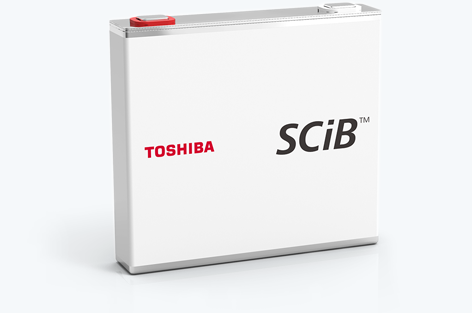
Semiconductors is another area we will continue to focus on. We are developing devices for use in power electronics, for applications such as automobiles, industrial equipment and power generation systems that can withstand voltages of several thousand volts. We are also working on next-generation compound semiconductors that use materials like SiC (silicon carbide) and GaN (gallium nitride) to advance miniaturization and high efficiency. In automotive applications, we have our eye on a future of automated vehicles, and are developing high-precision image recognition processors and distance measurement sensors.
Currently, in the field of mobility, the wider penetration of e-vehicles is seen as the default route, and the key word is CASE, an acronym for connectivity, autonomous, shared and electric. When we think about how that will lead the way to automated driving, it’s clear that technologies that Toshiba possesses, such as batteries and automotive semiconductors, will be essentials. This view is also backed up by the great interest car manufacturers are showing in the knowledge and capabilities of electrical equipment manufacturers.
– If we can turn to AI technology, what is the direction of your R&D?
Saito: We have always developed AI technologies with a view to solving basic problems at work sites. As I mentioned, we have built up know-how over many years, including the automated postcode readers and letter-sorting machines that we developed way back in the 1960s. We give a purpose to our pursuit of AI by asking questions like, “What kind of solutions can be offered at sites overflowing with data, or at sites that require human interventions?” Examples here include technologies to analyze the level of deterioration of bridges, to predict power demand levels with high accuracy, and spoken dialogue systems based on speech recognition and speech synthesis technologies. While making full use of the worksite knowledge we have acquired up to now, we are also promoting development in cooperation with collaborative research organizations. As for the direction of development, we are moving beyond “human-assisted AI” that tells us how to efficiently find results when we know the correct answer, and are now promoting development of “self-learning AI” where humans no longer have to provide advance teaching.
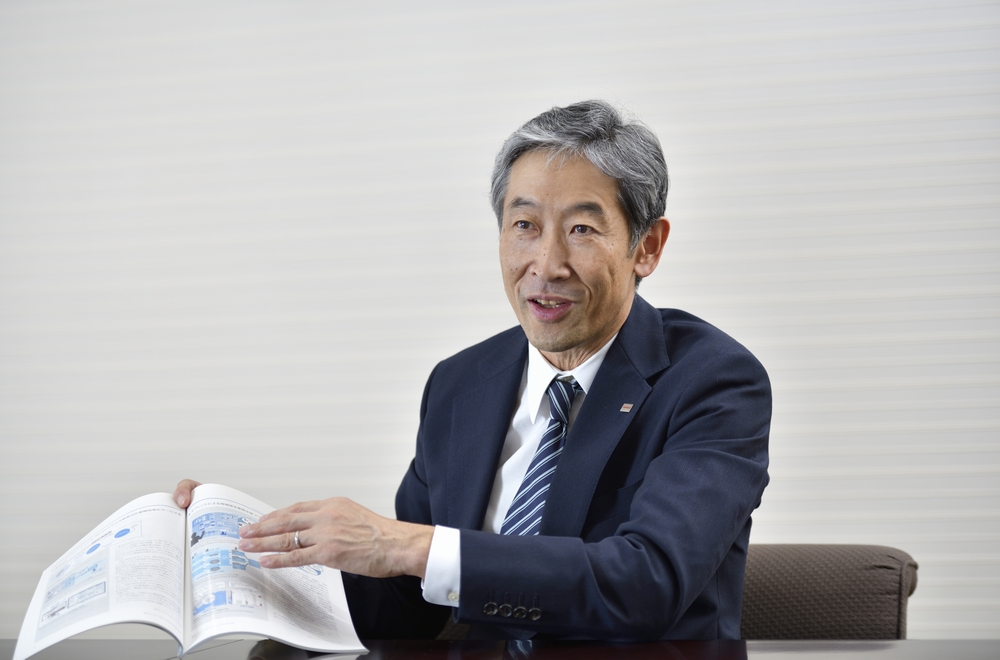
– It looks as if we are headed for a new age, one where the cyber world and the physical world merge. It’s a world that will require researchers and engineers who can enhance and accelerate the pace of development not only of AI technologies that analyze and make more accurate performance predictions for the devices or systems that are the source of information, but also for the information that is gathered from them. To that end, it will be necessary to change conventional thinking in such areas as R&D investment, co-creation inside and outside the company, and the cultivation of new fields. In the next part of our interview with Dr. Saito, we will look at the changing mindset underpinning Toshiba’s technology development.
![]()
Related Links
*This section contains links to websites operated by companies and organizations other than Toshiba Corporation.
https://www.toshiba-energy.com/en/transmission/product/iot.htm
News Release (3 Oct, 2017): Toshiba Develops Next-Generation Lithium-ion Battery with New Anode Mat | News | Toshiba
https://www.toshiba.co.jp/tech/index.htm
https://www.reuters.com/brandfeatures/road-to-a-new-day/powering-smart-cities-with-lithium-ion-batteries?utm_source=referral&utm_medium=toshibaclip&utm_campaign=prtoshibaclip&utm_term





